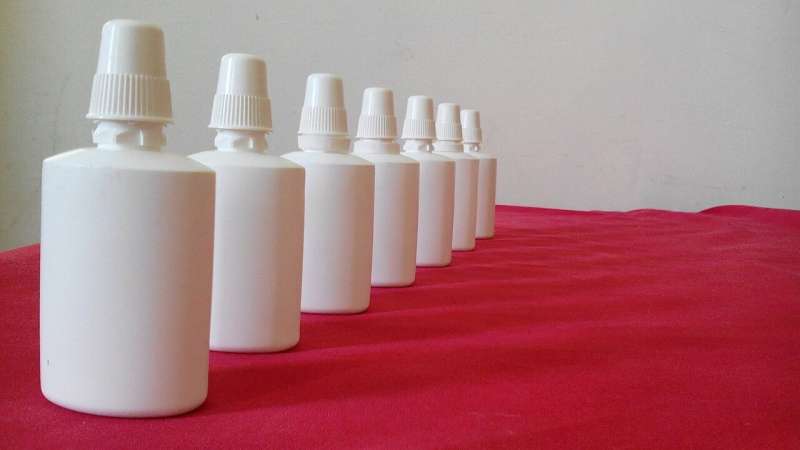Nasal Sprays as a Potential Needle-Free Alternative for Emergency Adrenaline Delivery in Anaphylactic Reactions

Emerging research suggests nasal sprays may replace injections for delivering adrenaline during severe allergic reactions, offering a quicker, needle-free, and portable solution for managing anaphylaxis in emergency situations.
In recent developments within emergency medicine, researchers are exploring the possibility of replacing traditional needle-based adrenaline injections with nasal spray formulations for treating anaphylactic episodes. Anaphylaxis, a severe and rapid allergic reaction caused by triggers such as nuts, insect bites, or stings, requires immediate administration of adrenaline to prevent life-threatening consequences.
Traditionally, adrenaline is delivered via intramuscular injection, often through devices like EpiPens, which have been the standard of care for decades. However, these devices can pose challenges such as needle phobia, difficulty in carrying or administering the injection quickly, and potential hesitations among users.
A systematic review led by Dr. Danielle Furness, from the University of Buckingham, analyzed five international studies—conducted in countries including Israel, Canada, Thailand, the U.S., and Japan—that compared the pharmacokinetics, safety, and efficacy of intranasal adrenaline sprays versus injected adrenaline during controlled experiments with healthy adults.
The findings revealed that intranasal adrenaline, administered as a liquid or dry powder spray, can be as effective as intramuscular injections, with some formulations capable of reaching the bloodstream more rapidly—within 2.5 to 20 minutes compared to 9 to 45 minutes for injections. Blood plasma levels of adrenaline were comparable or higher with nasal sprays, and effects on heart rate and blood pressure remained similar between the two methods. Side effects observed with nasal sprays were mild and transient.
Moreover, nasal sprays offer additional advantages such as longer shelf life—around two years compared to 1–1.5 years for injectables—and greater portability. For instance, the Neffy nasal spray measures just over six centimeters, significantly smaller than the over 15 centimeters length of an EpiPen.
Dr. Furness emphasized that if nasal sprays receive approval for emergency use, they could serve as a convenient, needle-free alternative that improves timely administration in out-of-hospital settings, especially benefiting individuals with needle phobia or in public emergency scenarios. She also noted the importance of integrating such options into guidelines once robust real-world safety and efficacy data are available, alongside careful monitoring during initial deployment.
Currently, the Neffy nasal spray has been approved and prescribed in the U.S. and Europe, including Norway and Iceland. In the UK, it has received approval from the Medicines and Healthcare products Regulatory Agency (MHRA) and is expected to be available by late 2025. Regulatory processes are underway for other countries such as China, Japan, and Australia.
While promising, this emerging approach has limitations, including that all current studies are early-phase trials involving healthy adults without active anaphylaxis episodes. Larger, long-term studies are necessary to confirm safety and effectiveness in real-world scenarios, and to understand the performance of nasal sprays outside controlled conditions.
Experts like Dr. Felix Lorang, from Germany, recognize the potential of nasal sprays to overcome barriers like needle phobia and ease of use, which could lead to faster and more widespread emergency treatment. Nonetheless, ongoing research and post-market surveillance are crucial to ensure patient safety and confidence in these new delivery systems.
For more detailed information, refer to the abstract of Dr. Furness’s research presented at the European Emergency Medicine Congress: Link.
Source: https://medicalxpress.com/news/2025-09-nasal-sprays-needles-adrenaline-anaphylactic.html
Stay Updated with Mia's Feed
Get the latest health & wellness insights delivered straight to your inbox.
Related Articles
Effective Strategies to Support Ethnically Diverse Patients with Hearing Loss
A recent study reveals practical, culturally sensitive strategies for audiologists to better support ethnically diverse patients with hearing impairments, promoting equitable hearing healthcare.
New Insights into Toxic HIV Protein Lead to Innovative Clinical Trial
Research at the University of Montreal uncovers a toxic HIV protein, gp120, and its role in immune system damage, paving the way for new treatment strategies and a clinical trial aiming to improve health outcomes for people living with HIV.



